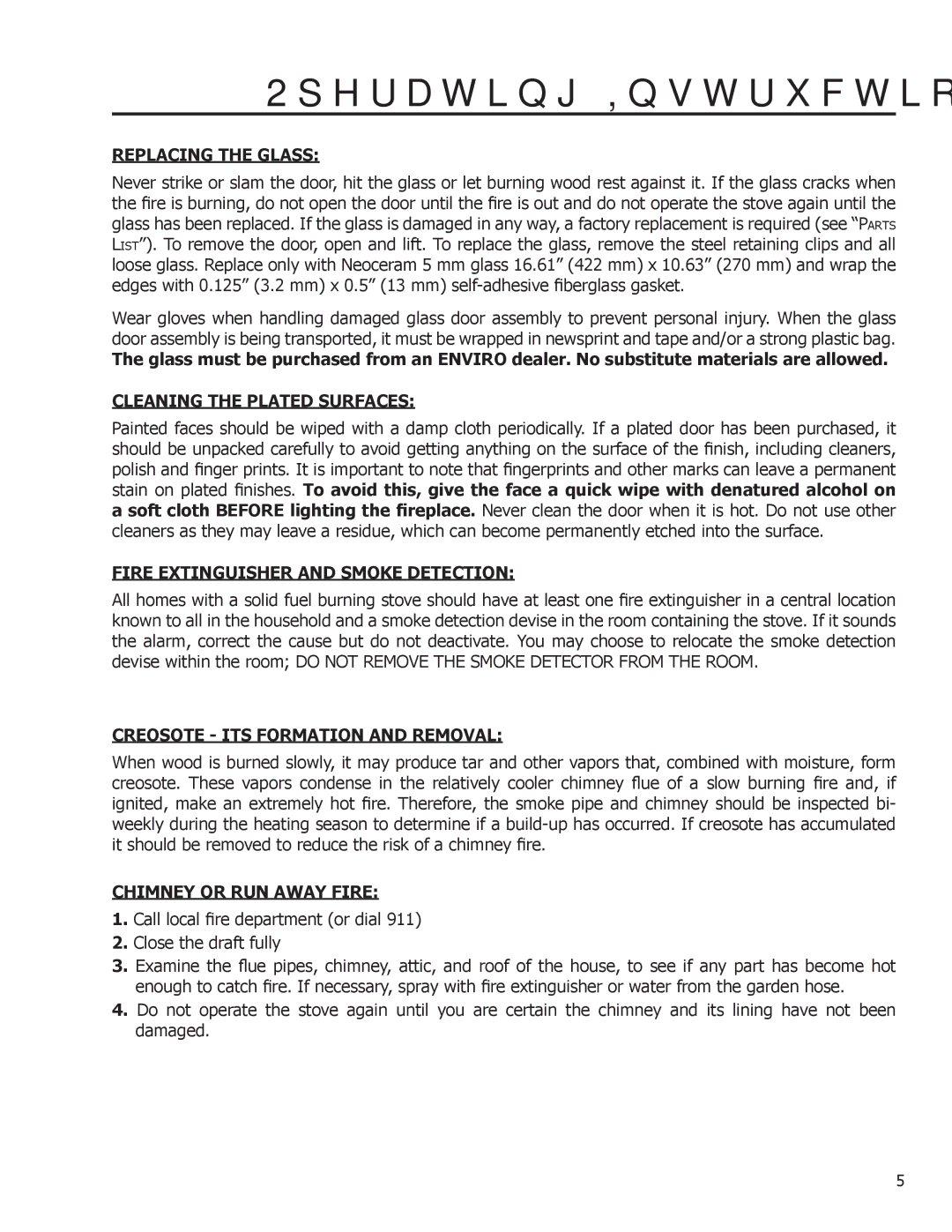Operating Instructions
REPLACING THE GLASS:
Never strike or slam the door, hit the glass or let burning wood rest against it. If the glass cracks when the fire is burning, do not open the door until the fire is out and do not operate the stove again until the glass has been replaced. If the glass is damaged in any way, a factory replacement is required (see “PARTS LIST”). To remove the door, open and lift. To replace the glass, remove the steel retaining clips and all loose glass. Replace only with Neoceram 5 mm glass 16.61” (422 mm) x 10.63” (270 mm) and wrap the edges with 0.125” (3.2 mm) x 0.5” (13 mm)
Wear gloves when handling damaged glass door assembly to prevent personal injury. When the glass door assembly is being transported, it must be wrapped in newsprint and tape and/or a strong plastic bag.
The glass must be purchased from an ENVIRO dealer. No substitute materials are allowed.
CLEANING THE PLATED SURFACES:
Painted faces should be wiped with a damp cloth periodically. If a plated door has been purchased, it should be unpacked carefully to avoid getting anything on the surface of the finish, including cleaners, polish and finger prints. It is important to note that fingerprints and other marks can leave a permanent stain on plated finishes. To avoid this, give the face a quick wipe with denatured alcohol on a soft cloth BEFORE lighting the fireplace. Never clean the door when it is hot. Do not use other cleaners as they may leave a residue, which can become permanently etched into the surface.
FIRE EXTINGUISHER AND SMOKE DETECTION:
All homes with a solid fuel burning stove should have at least one fire extinguisher in a central location known to all in the household and a smoke detection devise in the room containing the stove. If it sounds the alarm, correct the cause but do not deactivate. You may choose to relocate the smoke detection devise within the room; DO NOT REMOVE THE SMOKE DETECTOR FROM THE ROOM.
CREOSOTE - ITS FORMATION AND REMOVAL:
When wood is burned slowly, it may produce tar and other vapors that, combined with moisture, form creosote. These vapors condense in the relatively cooler chimney flue of a slow burning fire and, if ignited, make an extremely hot fire. Therefore, the smoke pipe and chimney should be inspected bi- weekly during the heating season to determine if a
CHIMNEY OR RUN AWAY FIRE:
1.Call local fire department (or dial 911)
2.Close the draft fully
3.Examine the flue pipes, chimney, attic, and roof of the house, to see if any part has become hot enough to catch fire. If necessary, spray with fire extinguisher or water from the garden hose.
4.Do not operate the stove again until you are certain the chimney and its lining have not been damaged.
5
